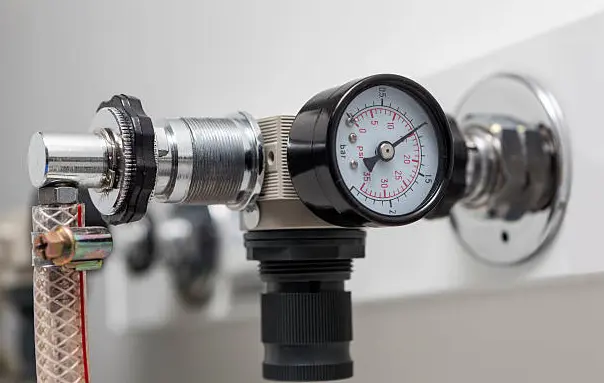Busy factories now lean on compressed air for everything from quick-release grippers to sturdy assembly tools. Engineers, buyers, and line managers want that air to pull its weight day after day. While the spotlight usually shines on hefty parts like valves or cylinders, an unassuming compressed air filter quietly does half the work by stopping dust and moisture before they ever reach the gear.
Purchasing groups who think a few dollars saved on filtration won’t cost anything later may be surprised when seals fray and pistons grind. Top brands such as Omchele, renowned for consistent quality, prove that spending a little upfront pays huge dividends in uptime and safety. This article breaks down how modern filters operate, the typical contaminants they intercept, and why they have become a must-have for longer-lasting pneumatic systems.
The Role of Compressed Air in Industrial Automation
In the world of industrial automation, bursts of compressed air act like invisible hands, moving cylinders, actuating valves, and powering handheld tools. Because the medium is clean by nature-no sparks, no open flames-it fits nicely into hygiene-sensitive shops such as pharmaceuticals or food packaging. Air pressure can also be dialed down quickly for delicate tasks, giving operators unmatched flexibility while still conserving energy.
Compressed air does great work, but only if the air itself is kept spotless. Dust, moisture, oil mists, and rust sneak into the stream during the compression process, and their presence never helps.
Left unchecked, those same impurities wear down valves, clog sensors, and force early repairs. The costs add up quickly, and so do the lost hours of downtime.
Enter the compressed air filter. It acts like a goalie for your machinery, letting only clean, dry air slide through.
How Compressed Air Filters Work
A compressed air filter intercepts crowds of contaminants before they can reach sensitive gear. Most setups use multiple stages, each one with its own job:
- Pre-filtering: Snags the big chunks of dust and any water that already condensed.
- Coalescing stage: Traps clingy oil mist and smaller bits that sneak by the first layer.
- Activated carbon layer (optional): Soaks up odors and leftover vapors in niche situations.
Many modern filters come with either automatic or manual drain valves. That small detail keeps pooled moisture from rusting pipes or dripping back into the system.
Sourcing from seasoned suppliers like Omchele lets engineers match the filter specs exactly to airflow volume, pressure needs, and the quirks of a given application. The right choice keeps production steady and maintenance close to zero.
Why You Should Install Compressed Air Filters
Keep Your Gear Running Longer
Dust, moisture, and grit whittle away at the seals and gaskets inside your pneumatic tools. A good filter catches this junk, so valves, impact wrenches, and spray guns wear out at a crawl instead of a sprint.
Spend Less Time and Money on Repairs
Dirty air is the sneak thief that robs you of production hours. By serving up cleaner air, you dodge surprise breakdowns and push routine maintenance farther down the calendar, shaving off both labor costs and headaches.
Make Sure Your Products Stay on Point
Electronics, food, and medicine won’t forgive even a speck of contamination. Crystal-clear compressed air keeps every assembly, filling, and finishing step on the money, giving quality teams one less thing to worry about.
Shrink Your Power Bill
Gummed-up lines force compressors to work overtime, and that shows up in your electric meter. A fresh filter keeps the airflow happy, eases the load on the motor, and quietly trims energy costs month after month.
Pass Inspections with Room to Spare
Regulators like ISO 8573-1 map out exactly how clean your compressed air needs to be. A high-grade filter sets the bar higher than the minimum, so auditors see a smooth, confident operation rather than a damage-control scramble.
Pair a good compressed-air filter with smart moisture control, and your whole setup runs cleaner, cooler, and a whole lot longer. Teams that try this trick with a hands-on partner like Omchele tend to notice the difference right away.
Key Considerations When Choosing a Compressed-Air Filter
Jumping into the filter market? Slow down: not every cartridge on the shelf will fit your story. Here are five straight-up questions that will save you headaches later.
Type of Contaminants
Dust, mist, or sludge- you name it, a filter can be tuned to catch it. Pick the wrong tune and the bad stuff gets to the tools anyway.
Flow Rate and Pressure
Compressors work hard, and undersized filters drag on that effort. If the cartridge can’t handle peak demand, the whole plant feels the pinch.
Micron Rating
Standard 5-micron pads catch everyday grit, but a paint booth needs 0.01-micron screens or the finish ends up sandy. The mission decides the mesh.
Maintenance Features
Clog lights, fast-drain valves, and snap-open bodies turn a chore into a minute-long check. Skip those bells and servicing becomes a weekend project nobody wants.
Installation Environment
Heat, salt spray, or the odd chemical splash will ruin weaker cases. Stainless housings or special seals aren’t an extra cost; they are insurance.
Picking the right compressed-air filter can feel overwhelming, so talking to someone who lives and breathes automation really helps. Specialists like Omchele step in with advice that matches your setup and your budget.
Where Clean Air Counts: Everyday Uses for Compressed Air Filters
Plenty of factories lean on these filters just to keep machines running without hiccups.
Automotive Assembly
Paint booths, weld robots, and torque guns all stop working right if dirt sneaks in. A clean-air system cuts downtime and keeps the finish flawless.
Pharma and Medical Device Shops
One speck of dust in a sterile zone can shut down a production line overnight. Tight filters let companies pass the white-glove audits that regulators demand.
Electronics and Semiconductor Plants
Even microscopic particles can short out a circuit board. Filters catch that grime before it reaches wafer-handling or testing rigs.
Food-and-Beverage Lines
Compressed air sometimes pokes directly at bottles or bags. If the air isn’t clean, customers notice it long before the company does.
Printing and Packaging
Pneumatic cylinders that pick, place, or seal jam up fast without dry air. A good filter saves those lines from expensive stops every hour.
All these examples show the real-world worth of air filtration. The right filter protects machines and, maybe even more important, keeps customers happy.
Best Practices for Maximizing Filter Performance
A little attention goes a long way with compressed-air filters.
- Peek at the element now and then so you catch any clogging early.
- Swap out the cartridge when the maker says, not when the problem shows up.
- Drain off the water every day if your shop tends to trap moisture.
- Keep an eye on the pressure gauge; big jumps often signal hidden trouble.
- Teach the maintenance crew how quick inspections can save hours later.
Putting this routine on a checklist, and backing it with good parts from Omchele, keeps the system running and the budget in the black.
Conclusion
Think of the compressed-air filter as the unsung hero of your production line. This one small piece helps machines last longer and products turn out cleaner.
Buying from a supplier like Omchele means snagging both high-grade hardware and plain-English advice on how to install it right.
Don t gamble with airborne grit that can wear out valves before you even notice. Give air filtration the priority it deserves and watch reliability improve at every step of your automation process.
Also Read-Vidwud AI: Transforming Online Body Swap and Talking Photo Technology



